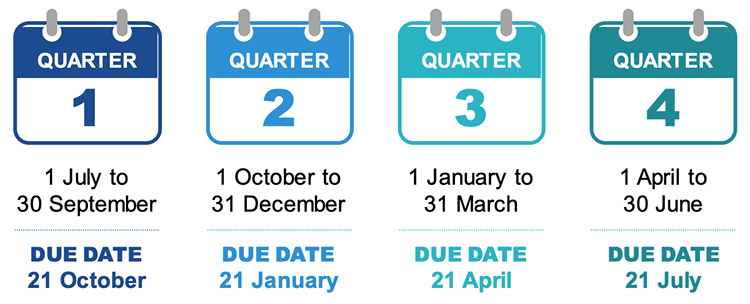From 1 July 2021, the National Aged Care Mandatory Quality Indicator Program is being updated and will include the addition of two new quality indicators.
In the 2019-20 Budget, the Australian Government made the announcement that it would provide additional funding to introduce mandatory reporting for two new quality indicators (QIs) relating to falls and fractures and medication management (PwC 2020). They are now officially being introduced.
Aged care services will now be required to collect data and report on the following:
- Pressure Injuries
- Physical Restraint
- Unplanned Weightloss
- Falls and Major Injury (Commencing July 1, 2021)
- Medication Management - including polypharmacy and antipsychotics. (Commencing July 1, 2021) (ACQSC 2021)
Background
The National Aged Care Mandatory Quality Indicator Program became a requirement from July 2019 for all approved aged care providers.
It was initiated as a method to measure key outcomes that contribute to the safety and quality of care provided by residential aged care services (PwC 2020).
The Quality Indicator Program empowers providers with significant and valid data to measure their performance and supports continuous quality improvement within organisations. Additionally, it provides consumers with transparent and comparable information about quality in aged care to help with their decision making (My Aged Care 2021).
What you need to know about the new Quality IIndicators
Falls and Major Injury
Data from 'falls' and 'falls from major injury' will need to be collected and reported on independently of one another. Under the QIs, a fall is defined as “an event that results in a person coming to rest inadvertently on the ground or floor or other lower level.” (Program Manual 2.0, p. 28).
On the other hand a fall from major injury is defined as “a fall that meets the definition above and results in one or more of the following:
- Bone fractures;
- Joint dislocations;
- Unplanned Weightloss
- Falls and Major Injury Closed head injuries with altered consciousness; and/or
- Subdural haematoma” (Program Manual 2.0, p. 28).

What needs to be reported?
- Percentage of care recipients who experienced one or more falls
- Percentage of care recipients who experienced one of more falls resulting in major injury
What data needs to be collected to report on these?
- Number of care recipients whose records were assessed for falls and major injury.
- Number of care recipients excluded because they were absent from the service for the entire quarter.
- Number of care recipients who experienced a fall (one or more) at the service during the quarter.
- Number of care recipients who experienced a fall at the service, resulting in major injury (one or more), during the quarter.
Important Note: Care recipients who only experienced a fall or fall resulting in major injury that occurred while the care recipient was away from the service and not under direct supervision of service staff are excluded from these counts.
Medications Management
Under this Quality Indicator, approved providers are required to collect and record data for two separate categories. These are:
- Medication Management - Polypharmacy
- Medication Management - Antipsychotics
Polypharmacy is defined as “the prescription of nine or more medications to a care recipient.” (Program Manual 2.0, p. 31). Whilst antipsychotics is defined as “medications prescribed for the treatment of a diagnosed condition of psychosis.” (Program Manual 2.0, p. 33).
Medications Management - Polypharmacy
What needs to be reported?
- Percentage of care recipients who were prescribed nine or more medications
What data needs to be collected to report on these?
- The collection date for the quarter.
- Number of care recipients assessed for polypharmacy.
- Number of care recipients excluded because they were admitted to hospital on the collection date.
- Number of care recipients prescribed nine or more medication charts and/or administration records as they are on the collection date.
Important Note: All medications with an active ingredient are counted in this indicator, except for the following:
- Lotions, creams or ointments used in skin and wound care;
- Dietary supplements, including those containing vitamins;
- Short-term medications, such as antibiotics or temporary eye drops; and
- PRN medications.
Medications Management - Antipsychotics
What needs to be reported?
- Percentage of care recipients who received antipsychotic medications
What data needs to be collected to report on these?
- The collection date for the quarter.
- Number of care recipients assessed for antipsychotic medications.
- Number of care recipients excluded because they were admitted to hospital for the entire seven-day assessment period.
- Number of care recipients who received an antipsychotic medication.
- Number of care recipients who received an antipsychotic medication for a medically diagnosed condition of psychosis.
Updates to existing Quality Indicators
Further research was conducted to improve the understanding of quality in the aged care sector. This highlighted the value of making data publicly available to inform the community about aged care services, support consumer choice, encourage continuous improvement, and aid in research and innovation (Royal Commission 2020).
To this end, the definitions and way in which data is collected and reported on for each of the pre-existing quality indicators has also been revised.
Pressure Injuries
A pressure injury is defined as “a localised injury to the skin and/or underlying tissue, usually over a bony prominence, as a result of pressure, shear, or a combination of these factors” (Program Manual 2.0, p. 11).
What needs to be reported?
- Percentage of care recipients with pressure injuries, reported against six pressure injury stages
What data needs to be collected to report on these?
- Number of care recipients assessed for pressure injuries.
- Number of care recipients excluded because they withheld consent to undergo an observation assessment for pressure injuries for the entire quarter.
- Number of care recipients excluded because they were absent from the service for the entire quarter.
- Number of care recipients with one of more pressure injuries (inc. those acquired outside of the service).
- Number of care recipients with one or more pressure injuries, reported against each of the six pressure injury stages (inc. those acquired outside of the service).
- Number of care recipients with one or more pressure injuries acquired outside the service during the quarter.
- Number of care recipients with one or more pressure injuries acquired outside of the service during the quarter, reported against each of the six pressure injury stages.
Physical Restraint
The physical restraint QI measures and reports data relating to all restrictive practice apart from chemical restraint. Restrictive practice is defined as “any practice or intervention that has the effect of restricting the rights or freedom of movement of a care recipient.” (Program Manual 2.0, p. 15).
What needs to be reported?
- Percentage of care recipients who were physically restrained
What data needs to be collected to report on these?
- The collection date for the quarter.
- Number of care recipients whose records were assessed for physical restraint over the three-day assessment period.
- Number of care recipients excluded because they were absent from the service for the entire three-day assessment period.
- Number of care recipients physically restrained (once or more and including the use of secure areas) on any occasion during the three day assessment period.
- Number of care recipients physically restrained during the three-day assessment period exclusively through the use of a secure area.
Unplanned Weight Loss
The unplanned weight loss QI is being split into two categories which have separate requirements. These are:
- Unplanned Weight Loss - Significant
- Unplanned Weight Loss - Consecutive
Significant unplanned weight loss is defined as “weight loss equal to or greater than 5% over a three month period.” (Program Manual 2.0, p. 19). Consecutive unplanned weight loss is defined as “weight loss of any amount every month over three consecutive months of the quarter” (Program Manual 2.0, p. 23).

Unplanned Weight Loss - Significant
What needs to be reported?
- Percentage of care recipients who experienced significant unplanned weight loss (5% or more)
What data needs to be collected to report on these?
- Number of care recipients assessed for significant unplanned weight loss.
- Number of care recipients excluded because they withheld consent to be weighed on the finishing weight collection date.
- Number of care recipients excluded because they are receiving end-of-life care.
- Number of care recipients excluded because they did not have a finishing weight recorded for the current or previous quarter. Include in the comments field the reason why the weight recording/s are absent.
- Number of care recipients who experienced significant unplanned weight loss of 5% or more when comparing their current and previous quarter finishing weights.
Unplanned Weight Loss - Consecutive
What needs to be reported?
- Percentage of care recipients who experienced consecutive unplanned weight loss
What data needs to be collected to report on these?
- Number of care recipients assessed for consecutive unplanned weight loss
- Number of care recipients excluded because they withheld consent to be weighed at the starting, middle and/or finishing weight collection dates
- Number of care recipients excluded because they are receiving end-of-life care
- Number of care recipients excluded for consecutive unplanned weight loss because they did not have a previous, starting, middle and/or finishing weight recorded, including comments as to why the weight recording/s are absent (e.g. the care recipient entered the service during the quarter)
- Number of care recipients who experienced consecutive unplanned weight loss of any amount when comparing their previous, starting, middle and finishing weights.
When and where does Quality Indicator data need to be submitted?
Once the data has been collected, it can be submitted via the My Aged Care provider portal and is to be submitted no later than the 21st of the month that follows the end of each quarter.
See the graphic below (as developed by the Department of Health) for annual deadlines:

Note: Data must be submitted for each residential aged care service, no matter if you are part of a larger provider group. (ASQSC 2021)
What’s next?
Review the National Aged Care Mandatory Quality Program Manual to ensure your organisation has all bases covered when it comes to acquiring data and reporting on the new QIs.
Keep an eye on the Department of Health website, as they are continually releasing a range of initiatives and materials to help simplify the new changes for providers.
References
- Aged Care Quality and Safety Commission 2021, National Aged Care Mandatory Quality Indicator Program, Department of Health, https://www.agedcarequality.gov.au/providers/national-aged-care-mandatory-quality-indicator-program
- Aged Care Quality and Safety Commission 2021, National Aged Care Mandatory Quality Indicator Program (QI Program), Department of Health, https://www.health.gov.au/initiatives-and-programs/national-aged-care-mandatory-quality-indicator-program-qi-program
- My Aged Care 2021, Quality indicators in aged care homes, Australian Government, https://www.myagedcare.gov.au/quality/quality-indicators-aged-care-homes#what-indicators-measured
- Royal Commission into Aged Care Quality and Safety 2020, Australian residential aged care quality indicators, Australian Government, https://agedcare.royalcommission.gov.au/news-and-media/australian-residential-aged-care-quality-indicators
- Royal Commission into Aged Care Quality and Safety 2020, Development of Aged Care Quality Indicators, PricewaterhouseCoopers, https://www.health.gov.au/sites/default/files/documents/2021/03/development-of-aged-care-quality-indicators---summary-report.pdf



